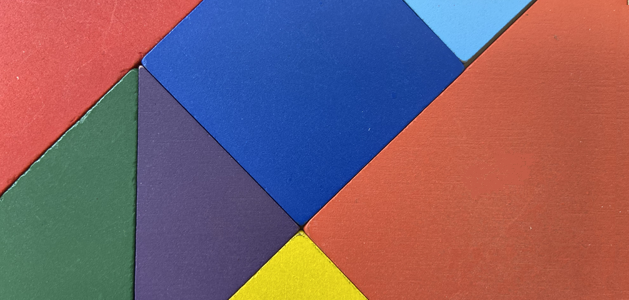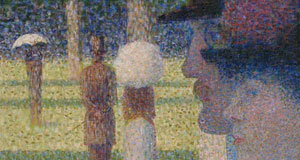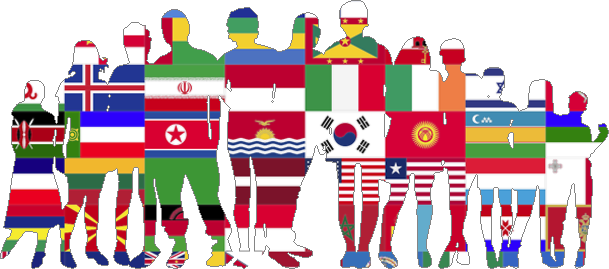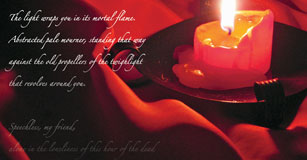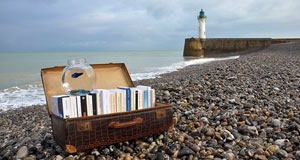Surreal Symmetry
Students use symmetry to create bizarre creatures around a self-portrait and then write a poem about the surreal image they have created.

Task
Hieronymus Bosch was a Dutch artist who painted in the surrealist style in the 15th and 16th centuries, 400 years before the Surrealism movement began! Bosch explored both the good and bad extremes of human nature changing animals, people, and objects into fantastic new creatures, inspiring later surrealist painters like Ernst, Duchamp, and Dali.
After learning about surrealism, students develop their own surrealist work exploring good and bad, writing a rhyming verse that describes and expands on their artistic work.
Engage
Set the stage for the project by reading Nancy Willard’s Pish, Posh, said Hieronymus Bosch to your students. Much of Bosch’s artwork may be inappropriate for young viewers and this book provides a fun introduction to his work, while avoiding some of the darker themes.
In this story, Bosch’s housekeeper becomes tired of encountering surreal objects and critters in the house, sharing:
“How can I cook for you? How can I bake?
When the oven keeps turning itself to a rake?
And a beehive in boots and a pear-headed priest
Call monkeys to order and lizards to feast.”
After reading the story, work as a class to develop a definition for surreal. The American Heritage Dictionary defines surrealism as art that expresses “the workings of the subconscious and is characterized by fantastic imagery and incongruous juxtaposition of subject matter.”
Let your students know that you will be challenging them to use one of their fears to help them create their own surrealist art.
Return to the images in the book or explore some of Bosch’s other works. Note: Use caution with other Bosch images, since many of them are disturbing and may not be appropriate for your learners.

Ask students to name objects in the images that are creepy or make them feel afraid. Work with students to identify which of the object’s attributes make them feel this way.
Use this opportunity to explore and discuss how visual artists use color (light and dark) and line (soft or sharp) to make us feel differently when we view their artwork.
Create
To help students get ideas for their surreal art, have students share a fear anonymously on scrap paper. Read them aloud to the class. Then, brainstorm attributes and adjectives for these fears to make it easier to create their own surrealist creature.
Ask each student to choose a fear they will use as inspiration for their surrealist illustration.
Have students use a cluster graphic organizer to name their fear in the center, and add adjectives and attributes in the surrounding boxes to describe it.
Students can use Wixie’s symmetry options to paint an outline for their scary/nice juxtaposition by dragging the Pencil tool from the top middle of the page down toward the outside edges at the bottom.
After students turn the symmetry options off, they can use the rest of the Paint tools to add details that both transform the space on the outside of these lines into a creature representing their fear, as well as create a picture of themselves impervious to this fear in the middle of the two symmetrical creatures.
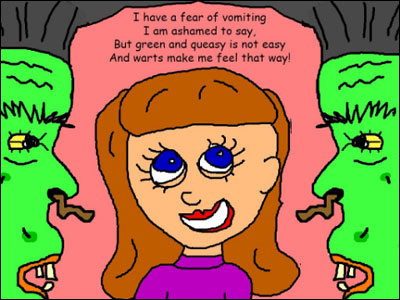
To extend the project, have students write a quatrain or other rhyming poem describing their fear. A quatrain is a four-line poem that includes rhyme on lines 2 and 4. If they need inspiration, have them look to the examples by Nancy Willard in the Pish, Posh, said Hieronymus Bosch book.
Share
Print the images to display them as an art exhibit in your classroom or school or reach out to a local coffee shop or even small business to see if they might be interested in showcasing student work in their office.
Combine individual student work into one document using Wixie’s Import Pages feature to make it easy to run a slide show for a digital art installation. You can also export the class book as a PDF or an ePub, so students can read and enjoy on their devices at home.
If you want a more professional looking published product, export student work as JPG files and upload to a photo-sharing site. Then, use the site’s features to publish a coffee table-style or paperback book.
Assessment
As you read the story, assess student reaction to the playful rhyme in the story. What is their reaction to the pictures in the book? How do they define surrealism? Interact with students as they brainstorm attributes for their fear, helping them visualize and verbalize what they are feeling.
Each student’s artwork will help you assess their understanding of how to use symmetry to create balance, their ability to use line, shape, and color for artistic impact, and their ability to imagine and develop a world from their imagination. Their poem will help you assess their ability to work with rhyme and meter.
Resources
Nancy Willard Pish, Posh said Hieronymous Bosch
Standards
National Core Arts Standards:
Creating
1. Generate and conceptualize artistic ideas and work.
2. Organize and develop artistic ideas and work.
3. Refine and complete artistic work.
Performing/Presenting/Producing
5. Develop and refine artistic techniques and work for presentation.
Responding
7. Perceive and analyze artistic work.
9. Apply criteria to evaluate artistic work.
Connecting
10. Synthesize and relate knowledge and personal experiences to make art.
ISTE Standards for Students:
6. Creative Communicator
Students communicate clearly and express themselves creatively for a variety of purposes using the platforms, tools, styles, formats and digital media appropriate to their goals. Students:
d. publish or present content that customizes the message and medium for their intended audiences.





